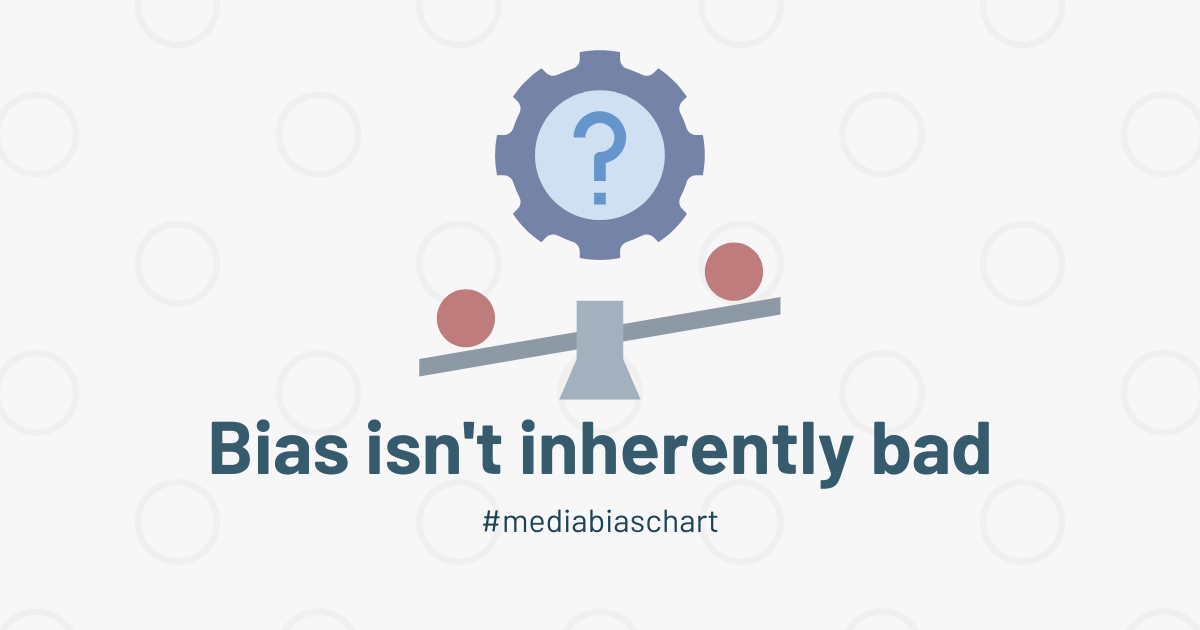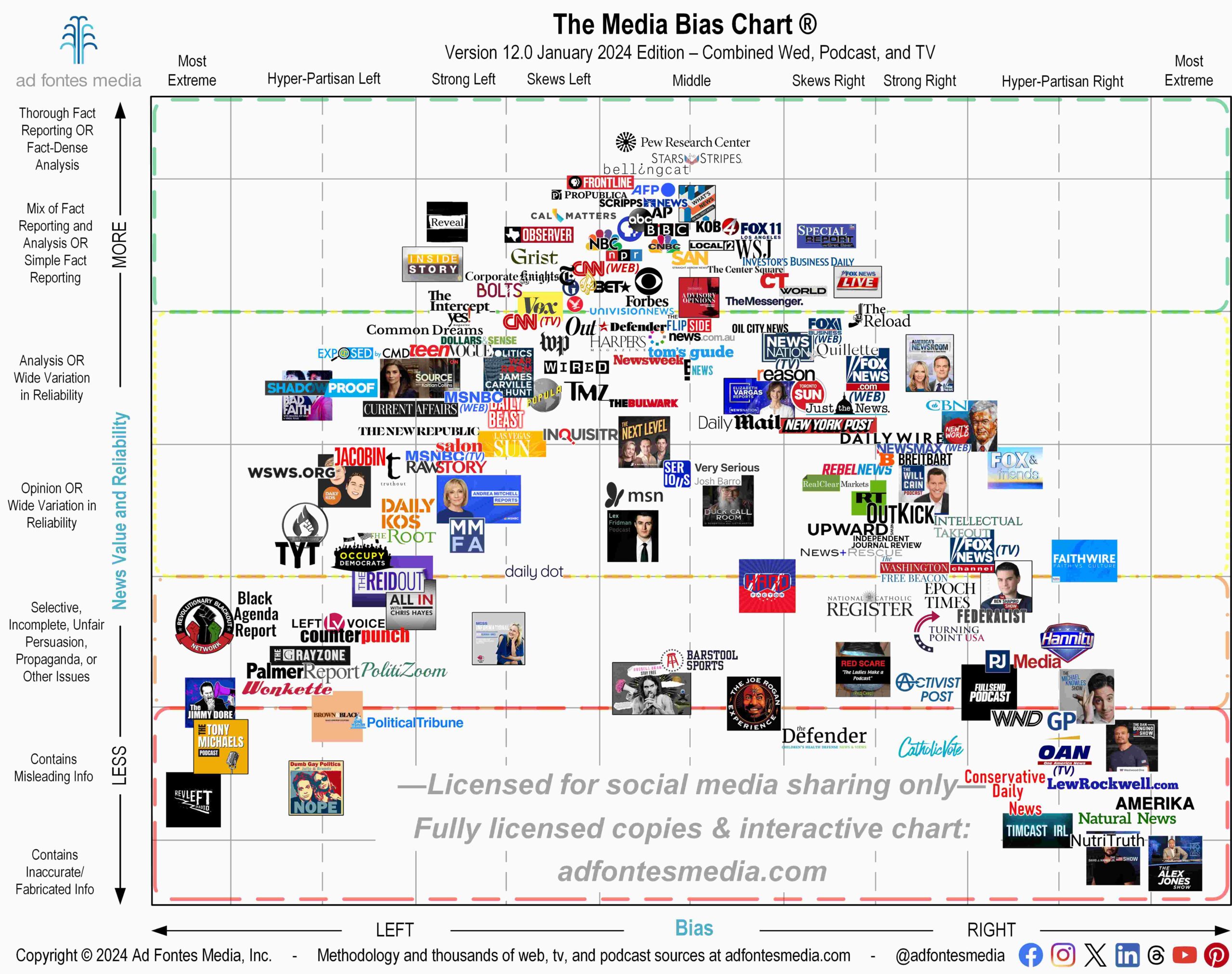Menu

Bias AND Reliability. We Must Measure Both
Author:
Vanessa Otero
Date:
04/11/2023
Why do we measure both bias AND reliability? Two main reasons:
1) Most modern misinformation is political
2) Bias isn’t inherently bad
Diving deeper:
1) Unfortunately, most of the content that falls under the broad umbrella of “misinformation,”– inaccurate info, misleading info, and gray-area selective/incomplete/propagandistic info, is either a) about a political topic and/or b) directed at political audiences. Take a look at the lower portion of the chart. There are some outliers at or near the middle, but there is a high concentration of low-reliability content publishers that are way out to the left and right.
That’s because most of our current misinformation is intended to drive polarization. It finds receptive audiences where it can draw on people’s closely-held political identities to appeal to their worst instincts.
If you say you’re only concerned about misinformation without acknowledging its relationship with politics, you’re ignoring the elephant in the room. That’s why every conversation about misinformation leads to accusations of political bias. Good luck ignoring it.
In order to combat misinformation, and its resulting polarization, we must recognize whether it is left, right, or middle (which can be apolitical or cross-political). That’s because different approaches are required for effective solutions when the topics, creators, and audiences are different.
2) Bias isn’t inherently bad:
There is nothing inherently wrong with right, middle, or left (or conservative, centrist, liberal) principles. These principles stem from the moral foundations that actually make us good people.
These principles subsequently inform our actions and policy positions, and there we start to disagree on which ones are correct. But it is critical that we debate the merits of these to solve problems as a society; debates are the fundamental basis for societal progress. Therefore, debates involving left, right and middle bias are necessary. Just because an argument (in an article or show) has a left or right bias doesn’t mean it is inherently bad.
However, to maintain productive debate, the facts underlying the analysis or opinion must be sound. Therefore, it is not enough to say an argument (or a piece of content) is “right or “left” or “biased.” One can support a biased argument with better or worse levels of fact-fulness. Take a look at the “skews left” and skews right” columns of the chart. You find content all the way up in the reliable section and all the way down in the unreliable section. When our politically biased content takes us down into the realms where we dehumanize, vilify, and tell untruths about the other side, the ability to debate is lost.
It is important to understand the political bias of our misinformation if we hope to effectively combat it. And we must understand the reliability of our biased information if we hope to debate in a way that lets us resolve our political agreements.
 Vanessa Otero
Vanessa Otero
Vanessa is a former patent attorney in the Denver, Colorado area with a B.A. in English from UCLA and a J.D. from the University of Denver. She is the original creator of the Media Bias Chart (October 2016), and founded Ad Fontes Media in February of 2018 to fulfill the need revealed by the popularity of the chart — the need for a map to help people navigate the complex media landscape, and for comprehensive content analysis of media sources themselves. Vanessa regularly speaks on the topic of media bias and polarization to a variety of audiences.

 Vanessa Otero
Vanessa Otero